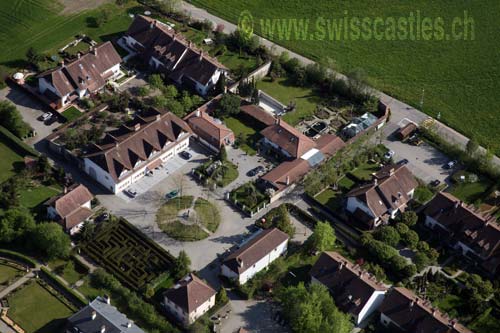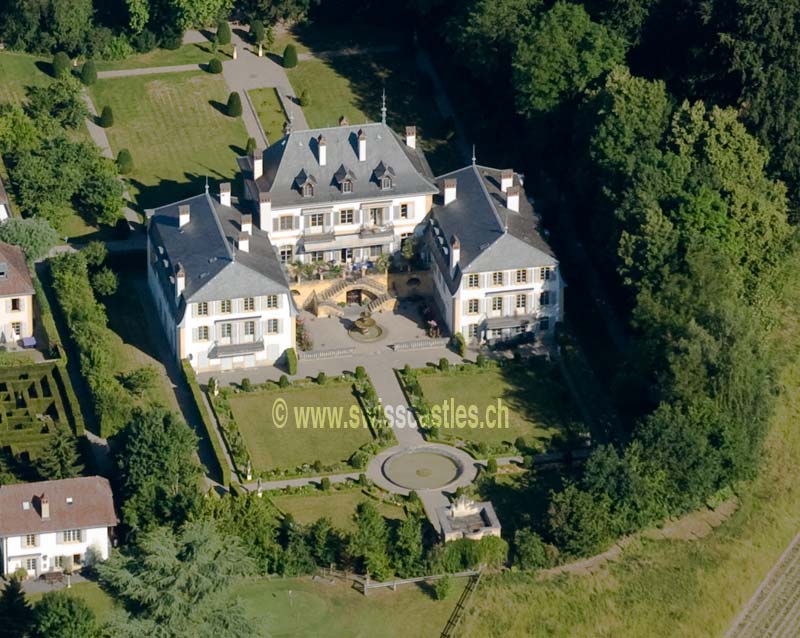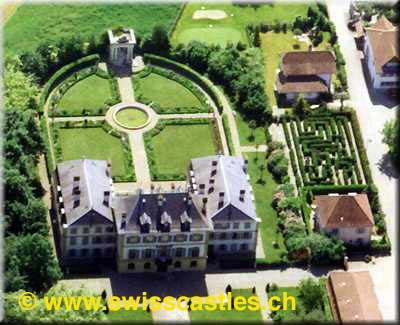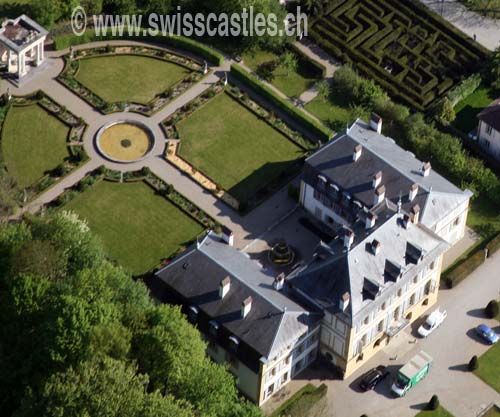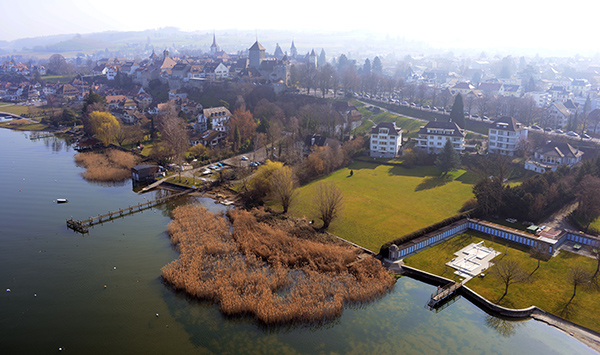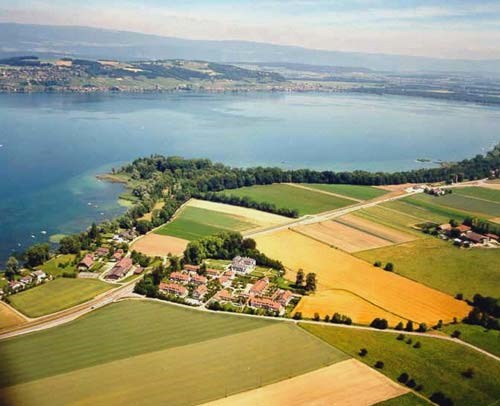Greng
Greng is a municipality in the lake district (French: District du Lac ) of the canton of Fribourg in Switzerland.
Geography
Greng is located on 439 m above sea level. M., 2.5 km southwest of the district town of Murten (air line). The village is located on the southern shore of Lake Murten near the mouth of the village stream, at the edge of the adjacent heights, in the northern Fribourg plateau.
The area of only just 1.0 km ² large municipality area includes a section on the southern shore of Lake Murten (around 1.5 km lakeshore length). The lake shore is passed especially in the Peninsula area in fin-de- Dy with a reed belt. From the flat riverside areas, the communal land extends inland on both sides of herkommenden of Courgevaux village Bach to the woods La Bourille (452 m above sea level. M. ). With 464 m above sea level. M. is achieved on a grassy hill west of Greng -Dessus the highest elevation of the community. From the municipality surface 1997 15 % came from settlements, 13 % of forest and shrubs, 70 % to agriculture and slightly more than 2% was unproductive land.
Greng consists of the districts Greng lingerie, 439 m above sea level. M. on the main road from Murten to Avenches, Greng -Dessus, 449 m above sea level. M. inland, situated on the village stream something, and the western part of the hamlet Blessoney (440 m above sea level. M. ). Neighboring communities of Greng are Murten and Courgevaux in the Canton of Fribourg and Clavaleyres in the canton of Vaud.
Population
With 157 inhabitants ( 31 December 2012) Greng one of the small communities of the Canton of Fribourg. In the year 1428 five taxpayers were noted in Greng, which corresponds to a population of around 20 people. The population of Greng amounted in 1850 to 81 inhabitants in 1900 to 70 inhabitants. During the 20th century, the population increased continuously until 1980 it further decreased to 55 people. Since then, a striking population growth was again associated with a tripling of the population recorded in 20 years.
Languages
Of the residents 92.0 % are German, 5.3 % French-speaking and 0.7 % speak Italian ( as of 2000). This Greng is mostly German speaking today. However, the place-name derived from grange (barn ), and the still valid names Greng lingerie and Greng -Dessus indicate an originally French speaking village. Probably the majority ratio between French and German has swept over the course of the 17th or 18th century.
Economy
Greng was until the second half of the 20th century, mainly coined by farming village. Even today, the farming, fruit growing and dairy farming and livestock have an important place in the economic structure of the population. More jobs are in small local manufacturing and services available. In recent decades, the village has developed into a residential community. Many workers are therefore commuters who work mainly in the regions of Murten, Fribourg and Bern.
Traffic
The community is conveniently moderately well developed. It lies on the main road 1 from Bern via Payerne to Lausanne. The nearest links to the A1 motorway was opened in 1997 ( Bern -Lausanne ) is located approximately 6 km from the town center. Since 25 August 1876, the municipality is crossed by the railway line from Murten to Payerne, but there is no stop in Greng. Since August 25, 2005 Greng is connected by a local bus with Murten.
History
On the shores of Lake Murten traces of pile dwellings have been found from the Neolithic period. The first written mention of the village was carried out in 1314 under the name Gruein; 1349 published the names of green and Grangiis (from Latin Grangia (barn ) is derived ).
The Bishop of Lausanne has leased several mills in Greng in the 12th and 13th centuries. Later it developed various industries for the processing of cloth, including one operated from 1775 to 1784 Indienne factory. In the 19th century the cloth industry was abandoned.
Since the Middle Ages Greng was under the rule of Murten. 1475 reached the village as part of the bailiwick of Murten under the joint administration of the estates of Bern and Fribourg. After the collapse of the ancien régime (1798 ) Greng came to the Canton of Fribourg. During the Helvetic Republic and the subsequent time it belonged to the district of Murten, before it was incorporated in 1848 with the new cantonal constitution in the lake district. From 1848 to 1982 Greng possessed a common municipal administration with the neighboring Murten, the cash, however, were conducted separately.
Attractions
Striking feature is the related Untergreng Castle Greng (formerly also called Grein ), which was built in 1785-87 as the owner of the residence. It served until 1803, variously as a meeting place of celebrities, including Madame de Staël and Benjamin Constant. The castle was restored in 1987 and built over the castle park with assembled villas. Greng does not have its own church, it always belonged to the parish of Murten.

